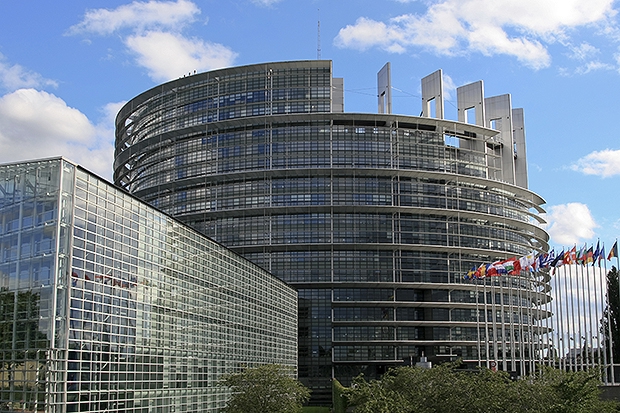Much climate protection for as little money as possible/ A core element of European climate policy / Much more significant than CO2 cars and other regulations/ All revenues must be spent in a targeted manner, in the case of ETS 2 for heating and transport, social aspects must be taken into account
"We are on the verge of adopting the biggest climate protection law of all time," stated the environmental policy spokesperson of the largest political group in the European Parliament and rapporteur for the European emissions trading, EPP MEP Peter Liese. Today, on Monday, the European Parliament will discuss a legislative package and vote on the relevant texts tomorrow, on Tuesday. The topic is emissions trading, which covers so far not only energy-intensive industry, power generation and aviation, but will also include maritime transport in the future. A separate ETS 2 will further cover road transport and heat generation, i.e., heating of buildings and process heat in industry. With its extension to maritime transport, the existing ETS alone will accomplish 25 times as much CO2 savings by 2030 as the controversial regulation on CO2 emissions from cars.
According to experts, emissions trading is the most effective climate protection instrument. The savings are achieved where they the costs are the lowest. "Precisely because climate protection is such an important task, we must choose the instrument that generates the least costs. Furthermore, it is essential that the funds are spent in a targeted manner. After intensive discussions, in the trialogue between the European Parliament, the Member States, and the European Commission before Christmas, we stipulated that 100% of the funds must be issued in a targeted manner. This comprises the expansion of renewable energies, energy efficiency and modern technologies to avoid CO2 emissions in industry. It is of particular importance that we have succeeded in establishing the ETS 2 for heating and road transport. Contrary to the proposals of the Commission and the Council of Ministers, not only road transport and heating of buildings are included but also the process emissions in the industry. This is in particular important for the SMEs in the eight or nine countries of the European Union that have already a CO2 price. A European solution will achieve much more for climate protection than a purely national solution, and companies from countries with an already existing CO2 price will not be disadvantaged in the competition. The winner of this competition will not be the one with the lowest CO2 price, but the one with the best technology, also in terms of reducing CO2. In the ETS 2, we have also laid down that special consideration must be given to social aspects. Hence, there is not only a climate social fund, which comprises over 86 billion euros, but also other funds, which value about twice as much money. So over 150 billion euros must be spent in such a way that the socially disadvantaged in particular benefit. In addition, we have reached a good compromise on protecting jobs and preventing industry migration (carbon leakage). I am pleased that a very overwhelming part of the stakeholders in Europe support the agreement."
Statements on the agreement
Prof. Ottmar Edenhofer, Chief Economist at the Potsdam Institute for Climate Impact Research and Chair of the newly established European Advisory Council on Climate Change of the European Environment Agency, commented in the German Press, that this is a huge step and that there are real heroes among the MEPs who have made progress in the most complicated negotiations. The ETS for buildings and transport is now here, and it will work (Edenhofer in Süddeutsche Zeitung, 12/29-22).
The CEO of Thyssenkrupp Steel Europe, biggest steel plant in Europe, Bernhard Osburg, described the agreement as a "successful compromise" at an event on the topic organized by the Konrad-Adenauer-Stiftung.
At the same event, EU Commission President Dr. Ursula von der Leyen highlighted that the European Emissions Trading System is the EU’s most important instrument. CO2 emissions must have a price, because nature can no longer pay for it.
Attachment: Briefing Note on ETS agreement


